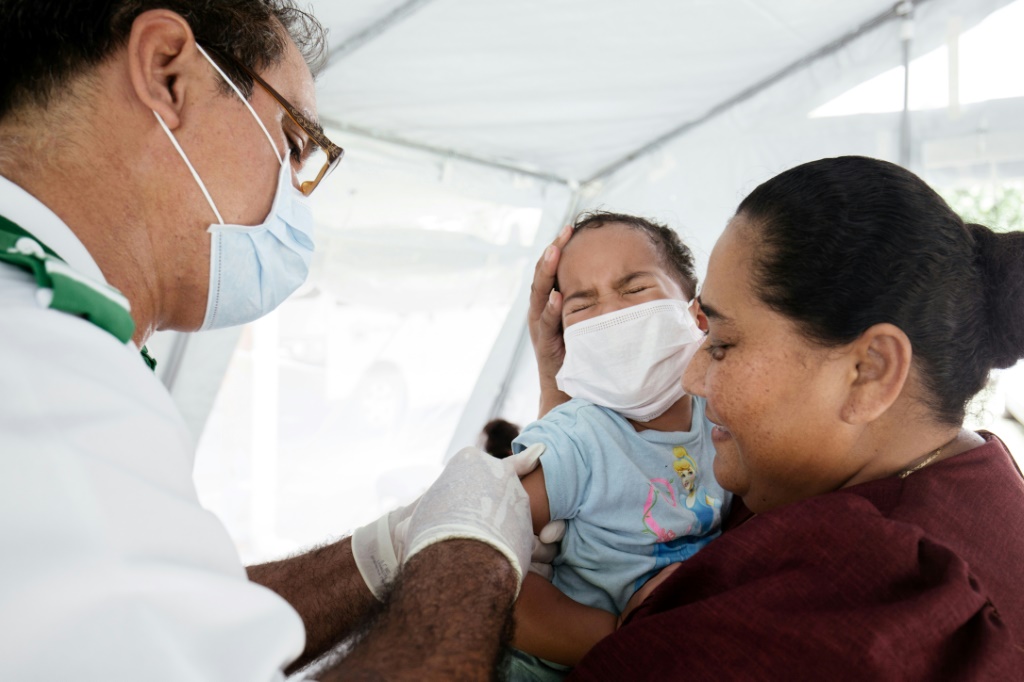Experts are warning that another public health crisis is brewing in this country. Fewer children have been receiving their routine vaccines in 2020, enough so that a possible outbreak, namely of measles, could result. “What we fear is having an epidemic within the pandemic,” explained Angela Shen, ScD, MPH, “you don’t want to have a micro-epidemic of measles [in] the backdrop of the current Covid pandemic.” Dr. Shen is a visiting researcher at the Children’s Hospital of Philadelphia with a background in public health at the CDC and FDA.
A fragile peace
In spring 2020, Dr. Shen co-authored a CDC report on childhood vaccination rates in Michigan. Comparing vaccinations in May of 2020 with previous years, she and her colleagues found that children in almost all age groups were getting fewer vaccines in 2020. For example:
For babies 16 months and younger, the drop in measles-containing vaccination was from 76.1% to 70.9% from May 2019 to May 2020. Between January 2020 and April 2020, as compared to the same periods in 2018 and 2019, the number of vaccines (excluding flu vaccines) that were given to children 18 years or younger decreased 21.5%, and for children 2 years and younger the drop was 15.0.%.
To ensure widespread protection, the study says the population needs greater than 90% vaccine coverage. If coverage doesn’t reach that figure, outbreaks can occur. As of 2019, Michigan’s schools were reporting a 93% vaccination rate, so a prolonged drop could push the number below that margin.
Some strides have been made since April, but there has not been a complete rebound, Dr. Shen said. Some states are vaccinating more children than others.
Signs of trouble
Vaccine researchers consider measles an important bellwether for infectious diseases, of all types. “Measles is what we often call the canary in the coal mine,” explained Dr. Shen, because of how infectious it can be. If no one in a population is vaccinated, an infected person could infect 90% of those people with whom they have close contact. Measles, she said, indicates how well a health system is functioning, including how well a country is doing at vaccinating children. A measles spike post-pandemic would be an indicator that kids are really behind in their vaccines.
Bigger problems
The reduction in measles vaccinations didn’t just develop because of Covid-19 restrictions. A joint WHO and CDC report cited a 556% surge in the number of measles cases from 2016 to 2019. The CDC called the increase in cases a “significant backstep.”
There are factors driving the vaccination reductions. The Democratic Republic of the Congo and Madagascar both had outbreaks due to low immunization. “…These outbreaks have largely resulted in a steady decline in both the coverage for the first dose or the coverage for the second dose,” said Dr. Shen.
Other possible reasons for fewer measles vaccinations include supply issues, stemming from poor storage or a lack of accessible healthcare providers. Sometimes, parents’ and healthcare providers’ reactions to negative vaccine news can change rates. Such news could lead to low demand, she said.
In Samoa, for example, two infants died in July 2018 after a muscle relaxant was used instead of water to dilute the vaccine. The nurses involved were sentenced to five years in prison, and the Samoan government suspended the program until the following November. When it resumed, the vaccination rate had already fallen by 31%. By the following month, the yearly totals had reached 4,257 cases and 70 deaths. The country ran out of infant-sized coffins and needed to rely on its neighbors for more.
Like SARS-CoV-2, the virus that causes Covid-19, measles is also caused by a virus. Infected persons experience a high fever and rash. Measles can be fatal and has no official cure. Before the vaccine, “we used to see 3 to 4 million cases of measles a year… and this led to 40-50,000 hospitalizations, 400-500 deaths annually,” explained Dr. Shen. Then, in the 1960s, a measles vaccine was developed. With time, the drop in the incident rate, meaning those who could have become infected, dropped by 90%, said Dr. Shen. By 2000, measles was eliminated from the United States.
Or so the health care community thought.
Here, there and everywhere
In 2019, over 1,000 cases were recorded in the United States, the most since 1992. The CDC blamed the lack of vaccinations for these cases. As good as “eliminated” sounds, it doesn’t actually mean measles is gone from the United States. The WHO defines “eliminated” as “the absence of endemic measles virus transmission in a defined geographical area…” Endemic measles would mean the virus existed like the common cold, naturally circulating in the community. So, although measles is not endemic in the US, outbreaks are still possible. Travelers and people from outside the United States can bring measles in and it can spread very quickly in areas with low vaccination rates. “There are different micro-outbreaks across different regions, different states, different cities, different countries,” Dr. Shen said. “One person with measles can lead to a large outbreak, especially when the vaccines are introduced into an area or place where coverage is low,” she said.
Dr. Shen said that in the United States, people have vaccine hesitancy for a few main reasons. First, many infectious diseases are fairly well controlled, so people who were very young or born after the vaccine became available in the 1960s have not seen firsthand what a case of measles can do. Second, misinformation from now-discredited studies linking vaccines to autism, alongside other misleading information found on social media, have spread and caused parents to decline vaccinations for their children. Parents may also feel apprehensive about certain individual vaccines or the number and schedule of vaccines given to small children.
A bit of fairy dust
According to Dr. Shen, some hospital systems have found workarounds to getting routine vaccines out during the pandemic. Many are offering vaccine clinics at different locations or different times outside of normal doctor visits so parents feel safer about getting their kids vaccinated.
There are currently no Covid-19 vaccines approved for children under 16, although companies including Moderna have begun testing on adolescents as the company works its way down the age ladder. CNBC reports that the company does not expect to have data on children until 2022.
The real magic of vaccines is that they impact more than the person getting it. A vaccination, Dr. Shen said, has a Tinker Bell fairy dust effect. “It doesn’t just benefit you. It benefits your community.”
Sabrina Emms is a science journalist. She interned in Philadelphia for the NPR affiliate on a health and science podcast. She also has worked as a researcher, looking at the way bones are formed.

















You must be logged in to post a comment Login